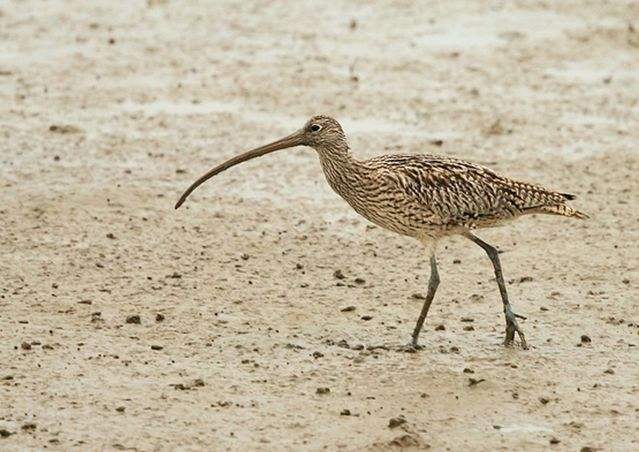Numenius madagascariensis
IUCN
LCBasic Information
Scientific classification
- name:Numenius madagascariensis
- Scientific Name:Numenius madagascariensis,Far Eastern Curlew,Redback Snipe, Redback Snipe, 黦 Snipe, Hausen
- Outline:Wading birds
- Family:Charadriformes S.family C.genus
Vital signs
- length:54.6-63.5cm
- Weight:725-1100g
- lifetime:10-20 years or so
Feature
The mouth is very long and curved; Darker and brownish than the white curlew
Distribution and Habitat
Travellers: Bangladesh, Islamic Republic of Iran, Oman. Origin unknown: Afghanistan
It breeds in China from Heilongjiang, Jilin and Liaoning to Hebei and eastern Inner Mongolia. Winters in Taiwan, China. During migration, it is found in Liaoning, Hebei, Shandong, west to Gansu, south to Guangdong and Hong Kong.
Rivers inhabiting low mountains, hills and plains. Lakes, reed marshes, ponds, and nearby wet grasslands and rice fields, sometimes along streams and nearby open wetlands. Migration season and winter are also common in coastal marshes, coastal shores, estuarine bars, and nearby lakeside grasslands and farmlands. In winter, it is mainly in the beach, mud land, estuary sand bar activities.
Appearance
The upper body of the curlews is black-brown, with white and brown-white feather margins, making the upper body black with brown spots. The white feather margin of the neck is wider, which changes the black brown into finer longitudinal lines, thus making the neck appear whiter. The primary feathers are blackish-brown on the outside and grayish-brown on the inside, with multiple serrated white stripes. From 4-5, there is also a white transverse spot on the outside, and the more obvious it becomes. The first and second primary fly feathers are mostly white, with only the apex appearing pale brown. The white plumage is not obvious from the third. Large outer wing cover gray-black with white terminal margin. The inner large cover and the middle and small cover are the same color as the back. The waist and tail overlying feathers have a broad brownish reddish-brown margin, and the tail feathers are light grayish yellow, with tan or grayish brown markings. Grayish white around the eyes, blu
Details
The foreign name is Far Eastern Curlew, and there are no subspecies.

Curlews are mainly travellers in China. Some breed in northeast China as summer migratory birds, while some overwinter in Taiwan as winter migratory birds. Spring reaches the northeast breeding ground in early to mid-April, and autumn migrates south from the breeding ground in late September. They often migrate in small groups.
The curlew often moves and feeds alone or in small, loose groups. However, at rest or in night habitats, they are often integrated into groups. During breeding, they move in pairs. Slow and quiet. Sexual timidity, activity often constantly looking up and stretching the neck, standing in one place for a long time, if there is danger, immediately take off. The wings flap slowly in flight, but fly faster. Flying in a group often forms a "V" shape, and landing often glides. Contact between individuals during activity or startled take-off often makes a "while" sound. When it is mainly found on sandy or muddy ground near water, as well as shallow water near water, its feeding method is mainly through its long curved beak to penetrate the sand or silt near water to find crustaceans and creepers hidden in underground holes. They often pick up food from the surface of the ground. Often foraging alone or in small, loose groups.
The curlew's diet consists mainly of crustaceans, mollusks, creepers, insects and larvae. Sometimes they also eat vertebrates such as fish, reptiles and amphibians.
The breeding period is from April to July. In mid to late April, pairs and courtship flights were conducted. The nest is in the marsh wetlands on both sides of the low mountain hills and streams or in the marsh of the lake on the plain at the foot of the mountain and on the saline-alkali land. The nest was a humble pit in the ground, with dead grass around and at the bottom. The eggs are pear-shaped, olive brown, or olive green in color, and are covered with brown or greenish-brown spots. The size of the eggs is 66-72.2×45.6-48.1 mm.
The distribution of large Curlews in Taiwan Island, China, is scattered from north to south in the west coast of the beach, but a large number of groups have been foraging for food here to spend the winter. More than 3,000 birds have been recorded in Datuxikou and Zhangbin Industrial Zone in Changhua County, which is not only an important bird resource in the coast of Changhua County, but also the largest winter population in Taiwan. However, with the continuous development of the Zhangbin Industrial Zone, the number of large curlew has declined from two to three thousand to less than 900 in 2001. There are many reasons for the decline in the population of large curlew, but the change of environmental landscape and the reduction of feeding grounds are definitely one of the important factors. The population of Curlews has stabilized, with numbers around 900 in 2001.
The curlew is listed as vulnerable globally because it is undergoing a rapid population decline due to habitat loss and degradation, and further human reclamation plans are expected to cause even greater declines in the future.
It was included in the List of Land Wild Animals under State Protection that are beneficial or have important economic and scientific research value (Item 133) issued by the State Forestry Administration of China on August 1, 2000.
Listed on the IUCN Red List of Threatened Species (IUCN) ver 3.1:2015-2016 - Endangered (EN).
Listed in China's "National Key Protected Wildlife List" (February 5, 2021) Level 2.
Protect wild animals and eliminate wild meat.
Maintaining ecological balance is everyone's responsibility!








